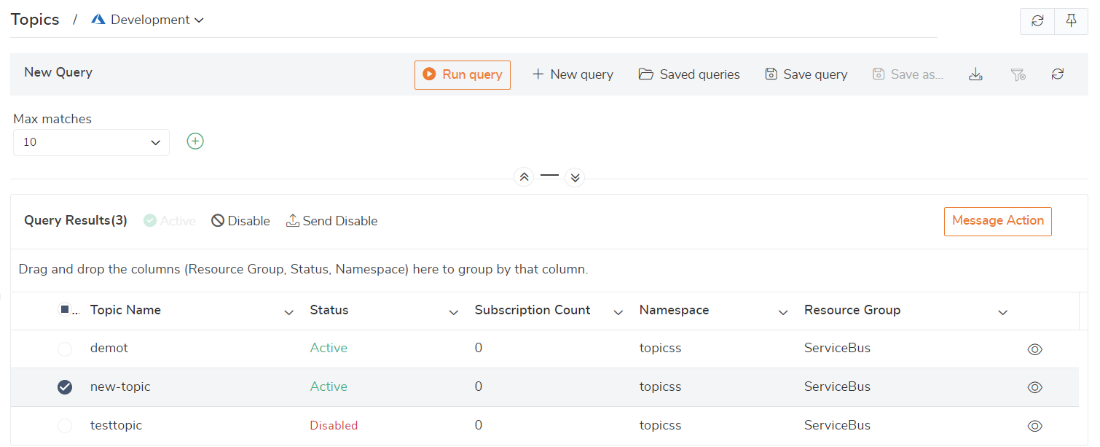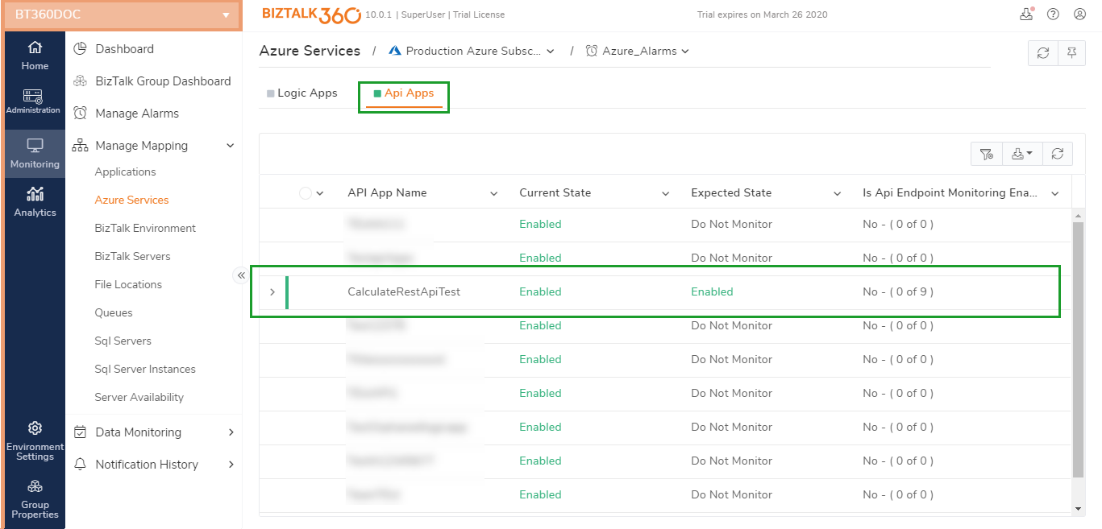
Nowadays, enterprises are gradually moving their integration platform towards Azure Serverless Technologies. To align with such migrations, we brought features to support those Azure Serverless technologies in BizTalk360, preventing users from context-switching between BizTalk360 and the Azure portal.
Azure Serverless is one of the most popular platforms for developing integrations between business systems. However, managing the integration services in Azure can be overwhelming, especially when managing multiple applications simultaneously. If you are serious about unlocking the full potential of Azure Integration Services and keeping your integration solutions healthy, then this blog is for you.
Organizations that use BizTalk Server are gradually moving their integrations to Azure Serverless technologies. By using BizTalk360 to administer and monitor their hybrid integrations, there are various benefits for administrators who need to administer and monitor those integrations. Such benefits include:
BizTalk360 allows users to set up role-based access control, enabling team members to access only the needed features. This feature ensures that they can focus on their core areas of expertise, thereby boosting productivity.
Monitoring and managing multiple integration services in Azure can be expensive. With BizTalk360, users can save costs by eliminating the need for multiple tools and monitoring agents. Additionally, users can optimize resources by configuring alerts to notify only on critical issues.
BizTalk360 empowers users with proactive monitoring and alerting capabilities. Configure the thresholds, set up alerts, and receive notifications when performance metrics deviate from the norm. This way, users can troubleshoot and resolve issues before they impact operations.
Receive notifications when and where they matter the most. BizTalk360 ships with different types of notification channels like:
Yet, by using the API, you can develop your own Notification Channels and connect to the systems of your preference.
Let’s take a closer look at the BizTalk360 features for supporting Azure Serverless and how users benefit from them:
With BizTalk360, Microsoft BizTalk Server administration is easy. Users become more efficient BizTalk administrators by using the product. BizTalk360 is a complete web-based admin console, and it requires very little BizTalk Server knowledge to carry out the operational and monitoring activities. Support engineers don’t require admin access to use BizTalk360. This way, your skilled BizTalk engineers can focus on their core activities, and you can quickly bring your IT and business users to support your BizTalk Solutions.
Imagine a world where every message was delivered to its recipient with the precision of a surgeon: no more missing emails, no more undelivered notifications. For example, there is an order system that produces some data from different sources, and the inventory system must process all the data. Once the Azure Subscription details are provided in BizTalk360, users can view/update/process the queues from BizTalk360. Follow the link of Azure Service Bus Queues to know more.

The publish-and-subscribe pattern helps scale to a large number of subscribers. Each published message is made available to each subscription registered with the topic. From BizTalk360, users can easily view/update/process topics without logging into the Azure portal. To learn more, please click on the link for information about Azure Service Bus Topics.

As enterprises move into the cloud, they can leverage, among other things, Logic Apps to seamlessly run workflows. Considering the importance of Logic Apps, BizTalk360 offers out-of-box Azure Logic Apps Operations capabilities. Using this feature, users can operate, manage, and monitor Azure Logic Apps from a single place.

Integration Accounts are used in hybrid integration projects. We have added the Integration Accounts capability to BizTalk360 as a part of the expanded support for hybrid integrations. Users can view various artifacts, such as Schemas, Maps, Certificates, Partners, and Agreements, inside the Integration Account. This capability eliminates the requirement for support staff to switch between the BizTalk360 and the Azure portal.

BizTalk360 offers the functionality to run SQL queries without the need to access SQL Server Management Studio. By default, the product comes with a pre-defined set of queries and allows users to define their own SQL queries.
There are two types of authentication modes available in the product:
Windows Authentication– Users can connect to the SQL instance with a Windows account.
SQL Authentication– Users can connect to the SQL instance using the username and password provided by the user. You can also connect to the Azure database using SQL authentication.
BizTalk360 provides two different ways to monitor your Logic Apps. These are:
Let’s have a glance at the capabilities of both ways to monitor your Logic Apps.
If you need to be aware that your Logic Apps are in their expected state, then you can use State-bound monitoring. This enables you to monitor if the Logic Apps are Enabled or Disabled. On top of that, with its AutoCorrect feature, BizTalk360 can also bring the Logic Apps back to their expected state when required.
When you want to keep track of the correct processing of your Logic App runs, you can use Logic App Data Monitoring. This enables you to monitor time and count-based metrics like Failed runs, succeeded runs, run/action latency, and many more.
You can also monitor your API Apps with BizTalk360. API App monitoring includes whether the API Apps are in their expected state (Enabled/Disabled). Besides that, you can also perform availability monitoring for the API App endpoint(s). The availability monitoring feature is very powerful because it does not contain just HTTP code monitoring, but also synthetic monitoring and duration monitoring.

We also brought Service Bus Topics monitoring to BizTalk360. The monitoring capabilities in BizTalk360 include monitoring of, for example, the Subscription state, Message Count, Active Message Count, Dead Letter Message count, etc.

Also, Service Bus Queues can be monitored with BizTalk360. After having provided information like the Namespace connection string and the name of the Queue that must be monitored, you will be able to monitor matters like the status and size of the queue, the message count, and so on.
If you are running SQL Server databases in Azure, you can monitor the content of those databases with BizTalk360. For that, you must provide the connection details to the SQL Server Instance and the database name, select the SQL Authentication method, provide the credentials, and you are done!

Note: Besides using the SQL Authentication method, from v10.8 on (expected October 2023), you can also access those databases in Azure with the Azure Active Directory (AAD) method, which is even safer than the SQL Authentication method.
Managing an integration environment can be challenging, but BizTalk360’s support for Azure makes it much easier by providing features and functionalities that enable effective management. To pull data from Azure, users need to provide subscription details like:
Learn how users can add BizTalk360 to Active Directory and retrieve subscription details.
In this blog, we have seen how BizTalk360 has spread its wings, and besides providing numerous capabilities to manage on-premises (or Azure IaaS) BizTalk Server environments, it also has many features to support hybrid integrations.
Are you extending your integrations into the cloud but struggling with properly administering those solutions? Why not get in touch with our experienced Product Consultant team? They will understand your challenges and explore if BizTalk360 fits your requirements. Request a free trial version of the product or book a demo.